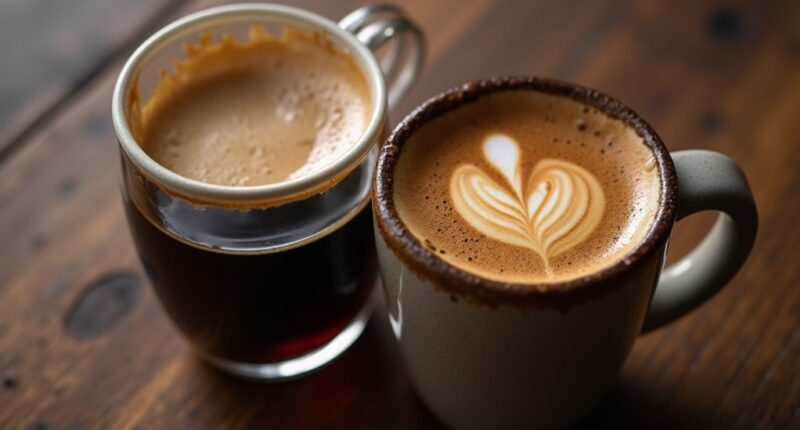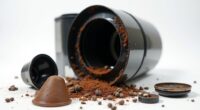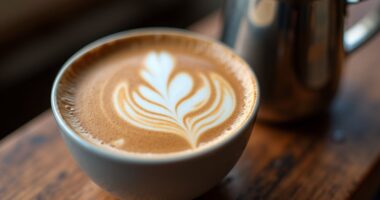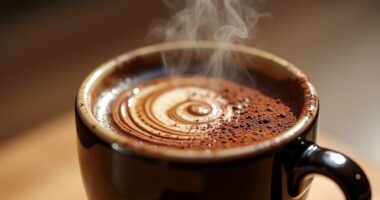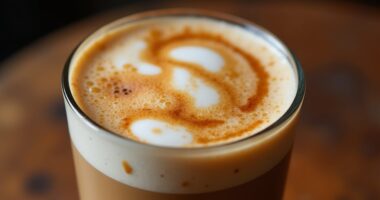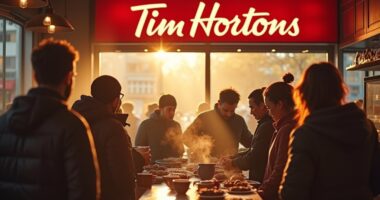So, you wanna know what has more caffeine, regular coffee or espresso? Well, it’s a bit tricky! Espresso hits harder with about 63 mg of caffeine per ounce, while regular coffee’s around 95 to 120 mg per 8-ounce cup. So, if you’re looking for that instant kick, espresso packs a punch! But remember, it’s all about serving size, so that coffee cup might still have you buzzing longer. Stick around, and you’ll discover more caffeine facts!
At a Glance
- Espresso contains approximately 63 mg of caffeine per ounce, while regular coffee has about 95 to 120 mg per 8-ounce cup.
- A single shot of espresso (1 ounce) generally has less caffeine than an 8-ounce cup of drip coffee.
- Double shots of espresso (doppio) contain around 126 mg of caffeine, which can be more than some coffee servings.
- Brewing methods affect caffeine levels, with espresso brewed quickly under high pressure and coffee taking longer to extract caffeine.
- Overall caffeine content can vary significantly based on beans, roast, and brewing technique for both espresso and coffee.
Understanding Caffeine Content in Espresso and Coffee
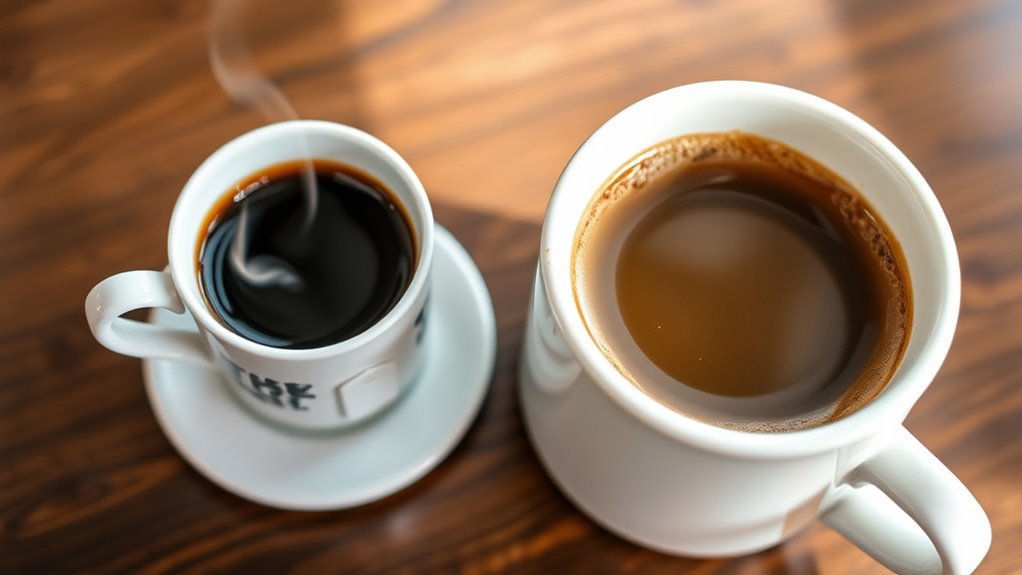
When it comes to caffeine in espresso and coffee, you might be surprised by what you find!
Sure, espresso packs a punch with about 63 mg of caffeine per ounce, but don’t let those espresso myths fool you. A regular 8-ounce cup of coffee can give you around 95 to 120 mg! So, if you’re sipping a latte with two shots, you’re getting more caffeine than a single espresso shot. It’s all about how much you drink! Additionally, the rich flavors of ground coffee can enhance your overall coffee experience, making it even more enjoyable.
Caffeine Concentration: A Closer Look at Espresso
Espresso’s like that friend who always knows how to bring the energy—just one shot and you feel ready to tackle anything!
With about 63 milligrams of caffeine per ounce, espresso packs a punch that’s hard to beat. Its unique brewing method, using high pressure for quick extraction, makes it super concentrated.
But here’s the kicker: caffeine variability means some shots can jump to 150 mg, depending on the beans and roast. This variability can be influenced by the type of coffee bean, which plays a crucial role in determining the final caffeine content.
Serving Size Comparison: Espresso vs. Coffee
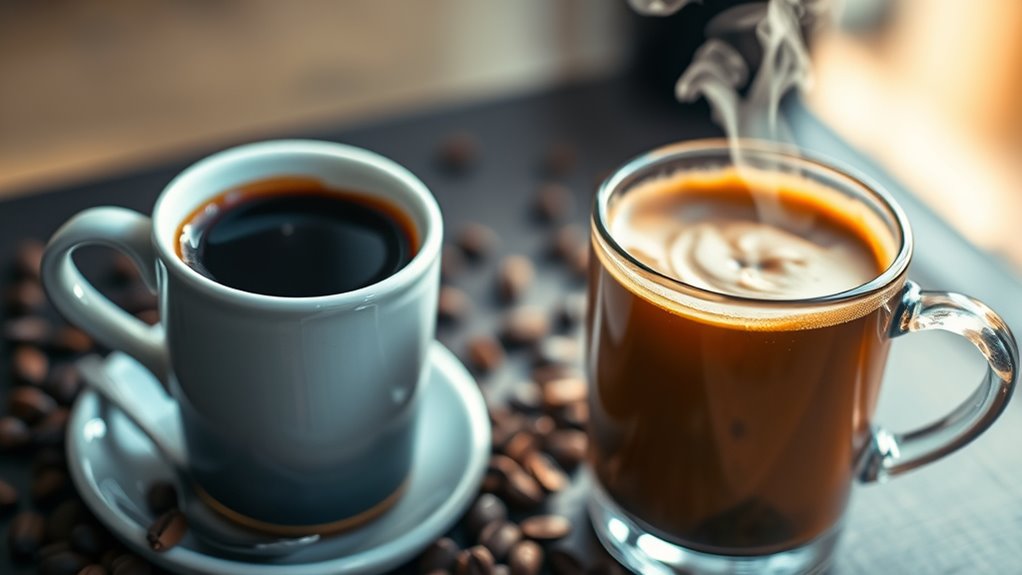
Let’s talk about serving sizes! When you think espresso, picture a tiny 1-ounce shot that packs a punch, right? A double shot is just 2 ounces, while regular brewed coffee comes in cups of 8 to 12 ounces.
That’s a big difference! Espresso comparisons show that while you sip slowly on a larger coffee, espresso is meant to be enjoyed quickly.
Plus, with about 63 mg of caffeine in that little shot, it’s concentrated goodness. Additionally, the brewing process of drip coffee makers can significantly influence the flavor profile and caffeine extraction of your coffee.
Brewing Methods and Their Impact on Caffeine Levels
While you might think that all coffee is created equal, the way you brew it can really shake things up, especially when it comes to caffeine levels!
Espresso’s high-pressure brewing techniques extract caffeine quickly, giving you a strong kick in just 20-30 seconds. On the other hand, drip coffee takes its time, letting water flow through coarser grinds over several minutes.
This longer brew time means more caffeine overall, but it’s less concentrated. So, if you’re after that flavor balance and coffee density, remember to take into account grind consistency, brew time, and pressure effects—because every little detail counts! Additionally, using a cold brew coffee machine can yield a smoother flavor profile while maintaining a respectable caffeine content.
Caffeine Safety and Recommended Intake
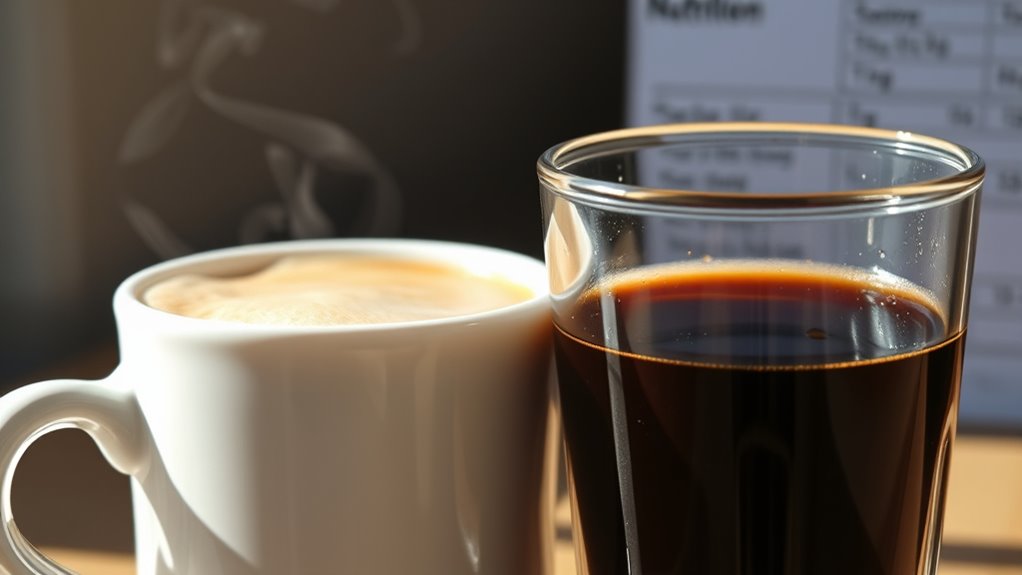
When it comes to caffeine, it’s not just about how much you’re drinking, but also about how it affects your body. You’ll want to keep caffeine limits in mind, especially if you’re a coffee or espresso lover!
The FDA suggests 400 mg daily for healthy adults—about four cups of coffee. But if you’re pregnant, it’s best to stick to 200 mg, and kids? Well, they should avoid it altogether! Additionally, choosing low acid coffee can help minimize stomach discomfort often associated with higher caffeine intake.
Caffeine Content in Espresso-Based Drinks
Espresso-based drinks are like the superheroes of the coffee world, packing a punch of flavor and caffeine!
Whether you’re sipping a latte or a mocha, you’re diving into a delightful mix of espresso varieties and unique flavor profiles. A single shot of espresso gives you about 63 mg of caffeine, while a doppio doubles that!
Savor the rich blend of espresso in every latte and mocha, with caffeine kicking up the excitement!
So, if you’re feeling adventurous, go for more shots in your Americano, and watch that caffeine soar! Just remember, the bigger the drink, the more espresso you get.
Additionally, the best espresso machine can help you create barista-quality drinks right at home. It’s a tasty way to keep the energy flowing, keeping you in good company with fellow coffee lovers!
Variability in Caffeine Content Across Coffee Types
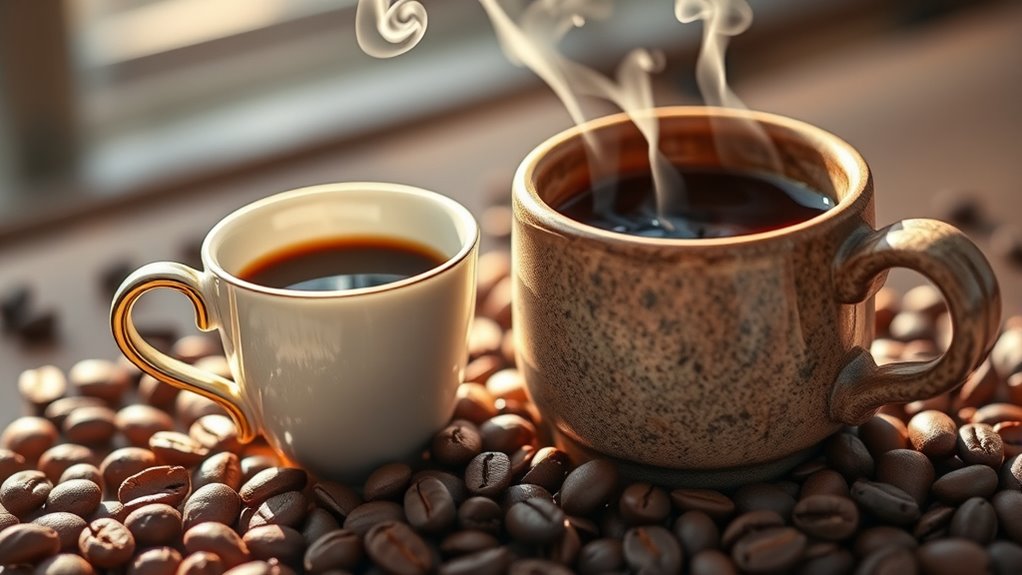
You might think all coffee is created equal, but oh boy, is that far from the truth!
When you explore different coffee types, you’ll discover some wild caffeine variability. Here’s what you need to know:
- Espresso packs about 63–75 mg of caffeine per ounce, while drip coffee only offers 12–16 mg per ounce.
- Coffee blends can vary by brand—Starbucks and Dunkin’ Donuts don’t play by the same rules!
- Brewing methods can change everything; espresso’s pressurized magic extracts caffeine like a champ. Moreover, the brewing technique used for different coffees can reveal unique flavor profiles and caffeine extraction levels.
Caffeine Sensitivity and Individual Responses
Have you ever noticed how some people can down a double shot of espresso and feel like a superhero, while others are buzzing like a jittery squirrel? That’s caffeine sensitivity for you!
It’s all about individual differences, shaped by genetic factors. Some folks metabolize caffeine fast, while others take their sweet time.
Age plays a role too—older adults might feel the jitters more. Plus, health conditions and medication interactions can ramp up anxiety responses.
If you’re struggling with sleep quality, it might be worth checking your caffeine habits. Additionally, consider how non-dairy creamers can affect your overall coffee experience, as they may influence your caffeine tolerance.
Everyone’s different, so listen to your body and find what works for you!
Making Informed Choices About Caffeine Consumption
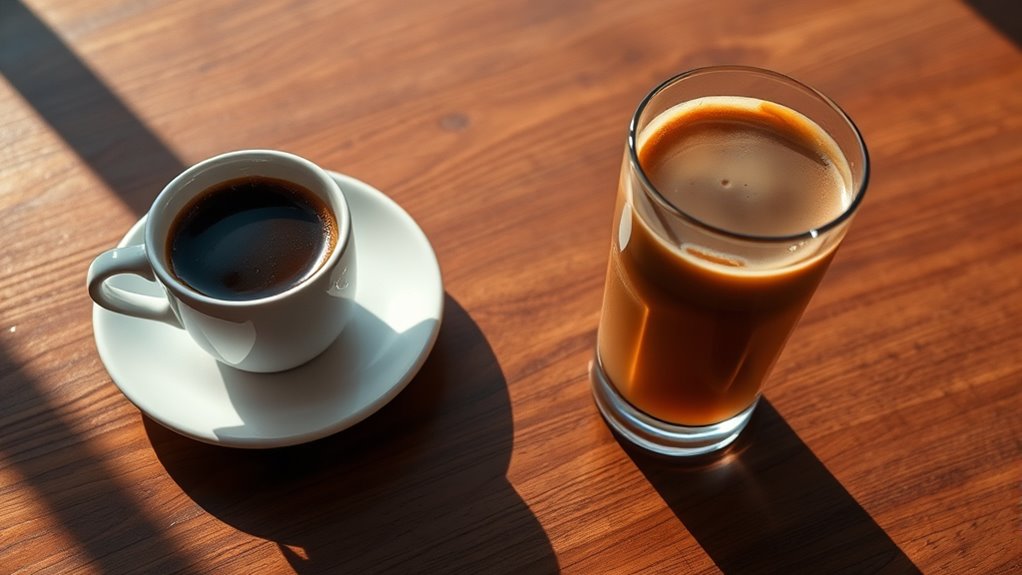
Here are some tips to help you navigate your caffeine journey like a pro:
- Consider caffeine alternatives like herbal teas or energy drinks for a change.
- Keep an eye on your serving size—those espresso shots add up fast!
- Time your caffeine for peak energy management to avoid late-night jitters.
- Explore low acid coffee options if you have a sensitive stomach to minimize discomfort while enjoying your brew.
